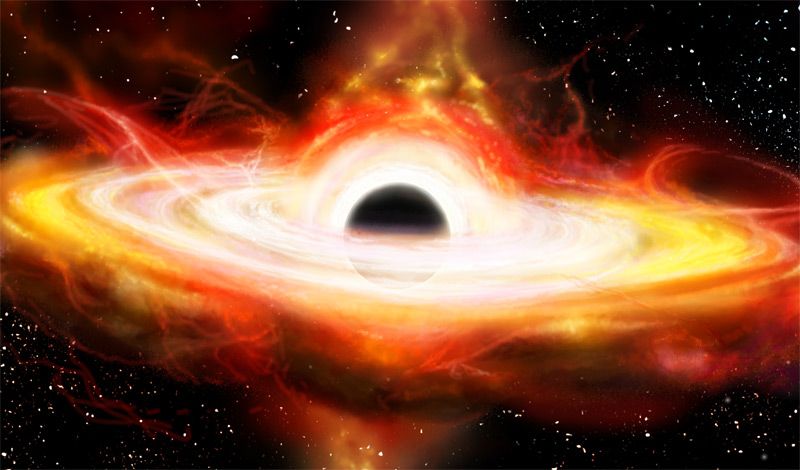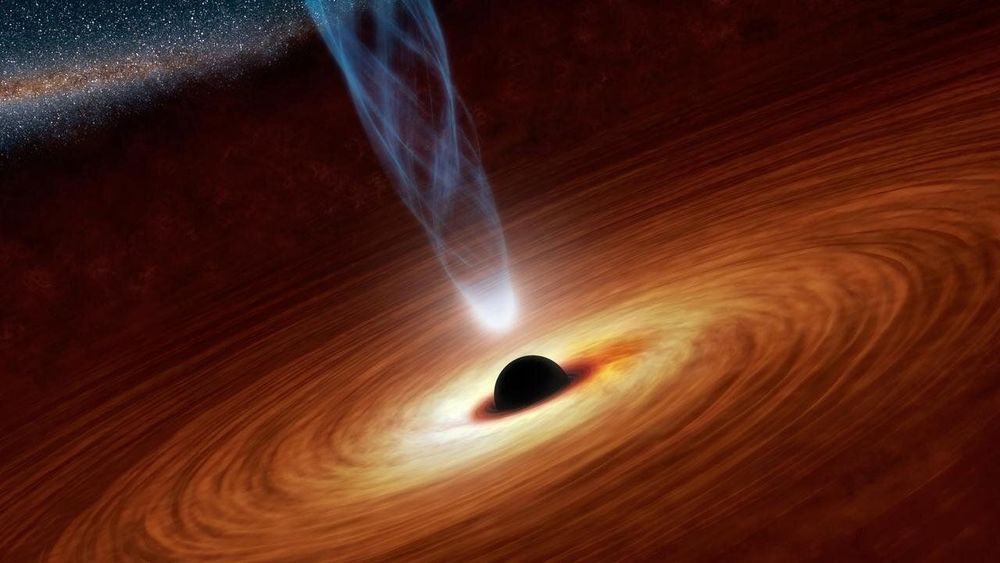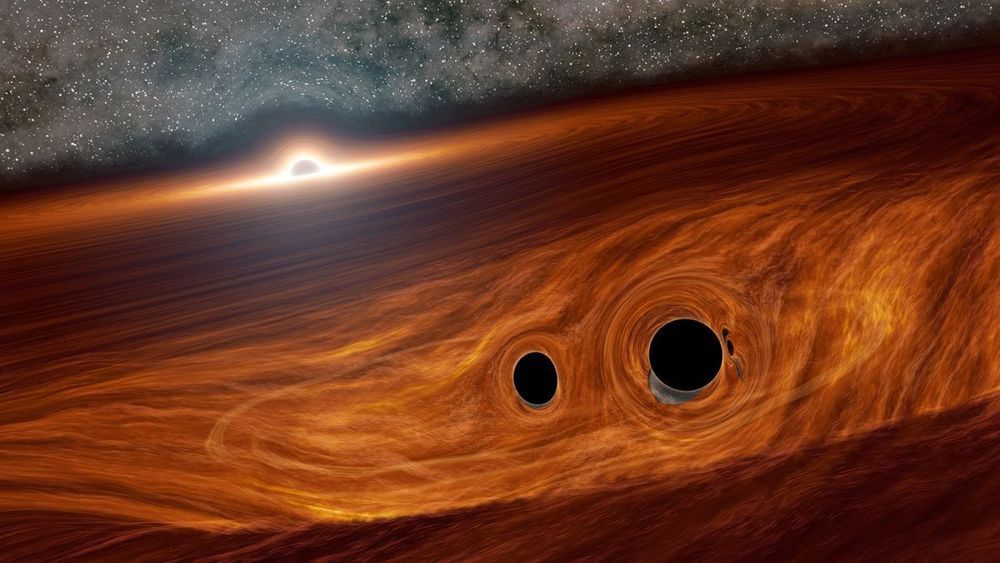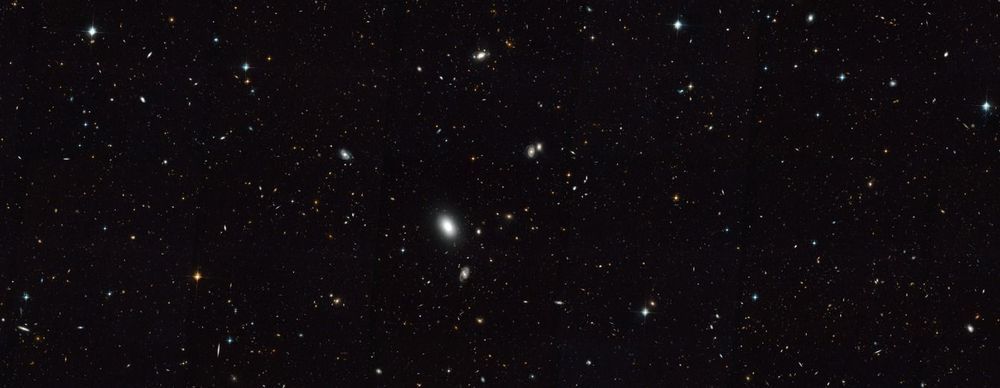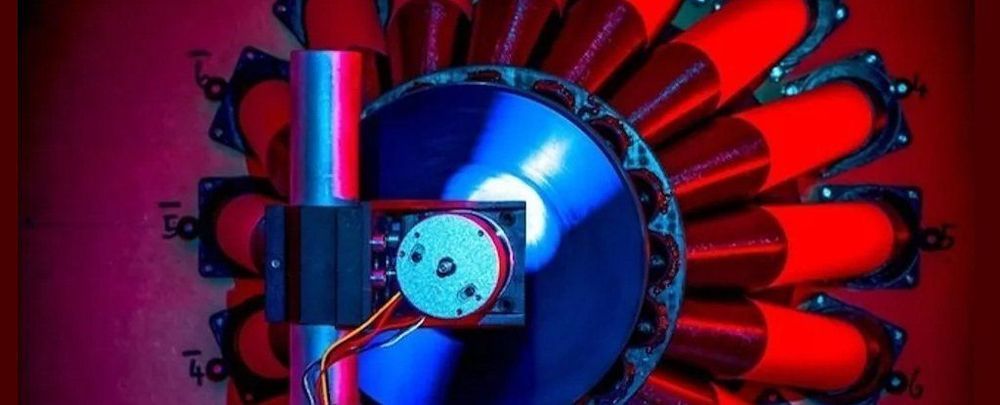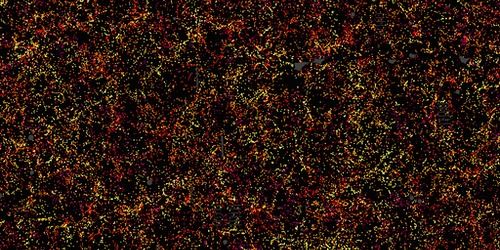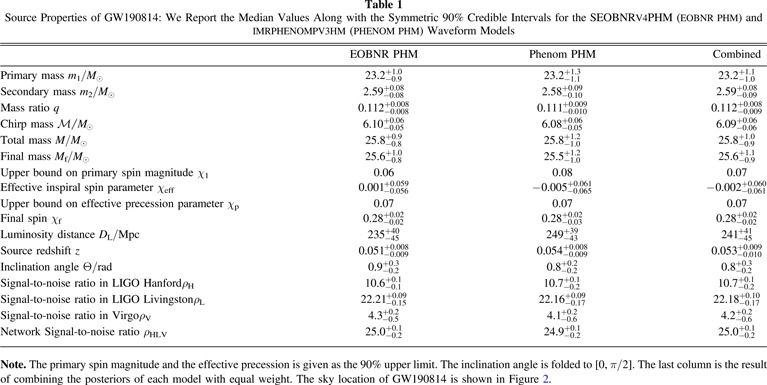Astronomers report that J2157, discovered in 2018, is now known to have 34 billion solar masses and is consuming the equivalent of nearly 1 solar mass every day, making it the fastest-growing black hole in the Universe.
Archive for the ‘cosmology’ category: Page 230
Jul 3, 2020
Fastest-Growing Black Hole as Big as 34 Billion Suns
Posted by Genevieve Klien in category: cosmology
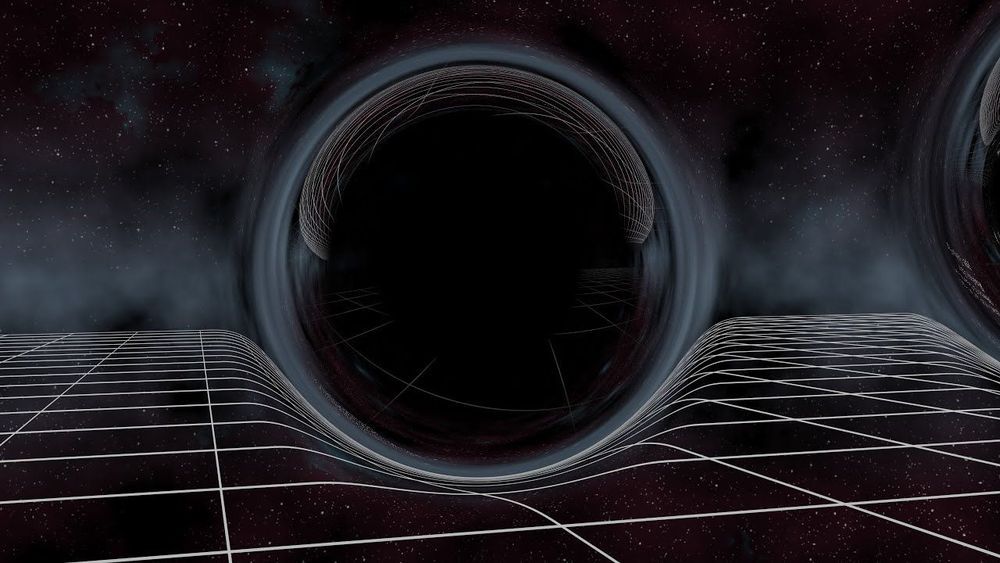
Scientists have estimated the mass of the fastest-growing black hole in the universe, and found it is 34 billion times the mass of the sun.
Jul 2, 2020
The detector with a billion sensors that may finally snare dark matter
Posted by Quinn Sena in categories: cosmology, electronics
Dark matter must exist, but has evaded all attempts to find it. Now comes our boldest plan yet – sensing its minuscule gravitational force as it brushes past us.
Jun 30, 2020
Hungriest of black holes among the most massive in the universe
Posted by Quinn Sena in category: cosmology
O.,o O.O
We now know just how massive the fastest-growing black hole in the Universe actually is, as well as how much it eats, thanks to new research led by The Australian National University (ANU).
It is 34 billion times the mass of our sun and gorges on nearly the equivalent of one sun every day, according to Dr. Christopher Onken and his colleagues.
Continue reading “Hungriest of black holes among the most massive in the universe” »
Jun 28, 2020
Scientists spot flash of light from colliding black holes. But how?
Posted by Genevieve Klien in category: cosmology
Jun 27, 2020
Mapping the Early Universe with NASA’s Webb Telescope
Posted by Genevieve Klien in categories: cosmology, evolution, mapping
Although many other observatories, including NASA’s Hubble Space Telescope, have previously created “deep fields” by staring at small areas of the sky for significant chunks of time, the Cosmic Evolution Early Release Science (CEERS) Survey, led by Steven L. Finkelstein of the University of Texas at Austin, will be one of the first for Webb. He and his research team will spend just over 60 hours pointing the telescope at a slice of the sky known as the Extended Groth Strip, which was observed as part of Hubble’s Cosmic Assembly Near-infrared Deep Extragalactic Legacy Survey or CANDELS.
“With Webb, we want to do the first reconnaissance for galaxies even closer to the big bang,” Finkelstein said. “It is absolutely not possible to do this research with any other telescope. Webb is able to do remarkable things at wavelengths that have been difficult to observe in the past, on the ground or in space.”
Mark Dickinson of the National Science Foundation’s National Optical-Infrared Astronomy Research Laboratory in Arizona, and one of the CEERS Survey co-investigators, gives a nod to Hubble while also looking forward to Webb’s observations. “Surveys like the Hubble Deep Field have allowed us to map the history of cosmic star formation in galaxies within a half a billion years of the big bang all the way to the present in surprising detail,” he said. “With CEERS, Webb will look even farther to add new data to those surveys.”
Jun 26, 2020
After 50 Years, Experiment Finally Shows Energy Could Be Extracted From a Black Hole
Posted by Quinn Sena in categories: cosmology, physics
A 50-year-old theoretical process for extracting energy from a rotating black hole finally has experimental verification.
Using an analogue of the components required, physicists have shown that the Penrose process is indeed a plausible mechanism to slurp out some of that rotational energy — if we could ever develop the means.
That’s not likely, but the work does show that peculiar theoretical ideas can be brilliantly used to explore the physical properties of some of the most extreme objects in the Universe.
Jun 26, 2020
CERN experiment makes first observation of rare events producing three massive force carriers
Posted by Genevieve Klien in categories: cosmology, particle physics
Modern physics knows a great deal about how the universe works, from the grand scale of galaxies down to the infinitesimally small size of quarks and gluons. Still, the answers to some major mysteries, such as the nature of dark matter and origin of gravity, have remained out of reach.
Caltech physicists and their colleagues using the Large Hadron Collider (LHC) at the European Organization for Nuclear Research (CERN) in Geneva, Switzerland, the largest and most powerful particle accelerator in existence, and its Compact Muon Solenoid (CMS) experiment have made a new observation of very rare events that could help take physics beyond its current understanding of the world.
The new observation involves the simultaneous production of three W or Z bosons, subatomic “mediator particles” that carry the weak force—one of the four known fundamental forces —which is responsible for the phenomenon of radioactivity as well as an essential ingredient in the sun’s thermonuclear processes.
Jun 25, 2020
A Quantum Signature for the Cosmos
Posted by Genevieve Klien in categories: cosmology, quantum physics
Certain galaxy patterns might encode whether the Universe’s primordial density fluctuations were quantum or classical in nature.
Jun 24, 2020
GW190814: Gravitational Waves from the Coalescence of a 23 Solar Mass Black Hole with a 2.6 Solar Mass Compact Object
Posted by Saúl Morales Rodriguéz in categories: cosmology, physics
R. Abbott 1, T. D. Abbott 2, S. Abraham 3, F. Acernese 4,5, K. Ackley 6, C. Adams 7, R. X. Adhikari 1, V. B. Adya 8, C. Affeldt 9,10, M. Agathos 11,12, K. Agatsuma13, N. Aggarwal 14, O. D. Aguiar 15, A. Aich 16, L. Aiello 17,18, A. Ain 3, P. Ajith 19, S. Akcay 11,20, G. Allen 21, A. Allocca 22, P. A. Altin 8, A. Amato 23, S. Anand 1, A. Ananyeva 1, S. B. Anderson 1, W. G. Anderson 24, S. V. Angelova 25, S. Ansoldi 26,27, S. Antier 28, S.
